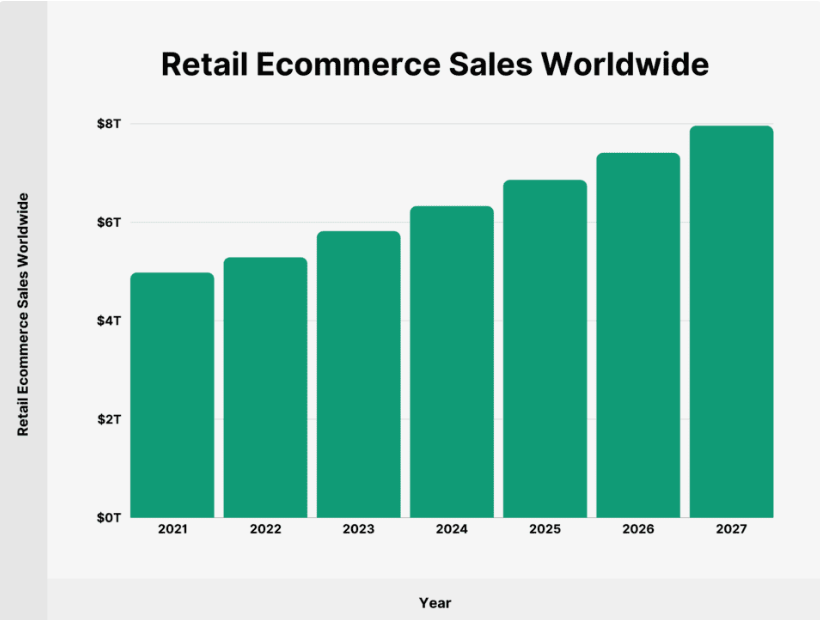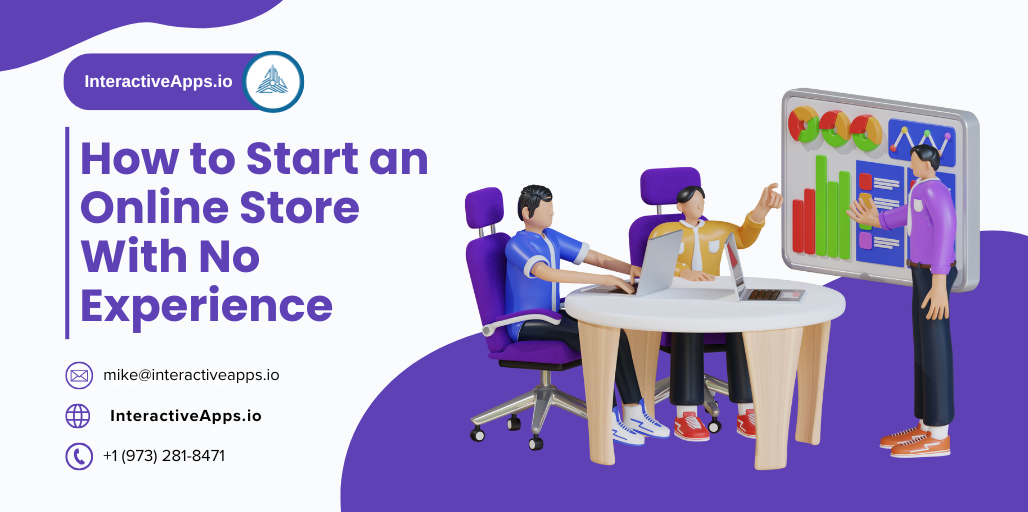Have you ever dreamed of owning your own online store but felt stuck because you had zero experience? You’re not alone. In 2025, the barriers to entry have never been lower, and thousands of people with no tech or business background are launching successful e-commerce ventures every day.
Whether you’re a stay-at-home parent, a college student, or just someone looking for a side hustle, this comprehensive guide will walk you through everything you need to know to start an online store from scratch — no experience necessary.
Why Now Is the Perfect Time to Start an Online Store
Before we dive into the step-by-step process, let’s look at some compelling reasons to start now.
E-commerce Is Booming
According to Backlinko, global e-commerce sales reached $6.4 trillion in 2025 and are expected to hit $7.4 trillion by 2025. In the U.S. alone, over 21% of all retail sales now happen online.

That’s not a trend — that’s a revolution.
Low Startup Costs
Thanks to platforms like Shopify, Wix, and WooCommerce, you don’t need to hire a developer or spend thousands to get started. You can launch a professional-looking store with less than $100 upfront.
Remote-Friendly Business Model
An online store can be run from anywhere — your bedroom, a beach in Bali, or a local café. All you need is a laptop and internet connection.
Step-by-Step Guide: How to Start an Online Store With No Experience
Step 1: Pick a Niche (Don’t Skip This!)
Your niche is your store’s focus. It’s what you sell and who you sell it to. A good niche should be:
- Profitable (people are spending money)
- Specific (not too broad)
- Aligned with your interests (you’ll be working on this a lot)
Niche Research Tools:
- Google Trends – to identify growing markets
- Amazon Best Sellers – to see what’s already selling
- Reddit & Quora – to understand community pain points
- Keywords Everywhere – to check monthly search volume
Example:
Let’s say you notice a growing interest in eco-friendly home goods. A sub-niche could be plastic-free kitchen products — targeted, in demand, and aligned with a conscious consumer trend.
Step 2: Choose the Right Business Model
Not all online stores are created the same. Your model depends on how involved you want to be with inventory, shipping, and product development.
Common E-Commerce Models:
- Dropshipping – No inventory, products are shipped directly from supplier
- Print on Demand (POD) – Custom designs on products like T-shirts or mugs
- Wholesale/Bulk Buying – You buy and store products, then ship them
- Handmade or Custom Goods – Great if you’re a creator or artisan
Best Model for Beginners:
Dropshipping or Print on Demand — low cost, minimal risk, scalable.
Step 3: Validate Your Product Idea
Before you buy 500 silicone straws or invest in a logo, make sure people actually want what you’re selling.
How to Validate:
- Ask for feedback in niche Facebook groups
- Run a small pre-launch campaign using Gumroad or Shopify Starter
- Test demand with a $20 Facebook Ad campaign
Goal:
Get at least 5-10 sales or preorders before you fully commit.
Step 4: Set Up Your Online Store
Now comes the fun part — building your store! The good news is, no coding skills are required.
Top Platforms:
| Platform | Best For | Price |
|---|---|---|
| Shopify | All-in-one solution | Starts at $39/month |
| Wix eCommerce | Design flexibility | Starts at $27/month |
| WooCommerce | WordPress users | Free (plus hosting) |
| BigCommerce | Scaling businesses | Starts at $39/month |
Essentials for Your Store:
- Homepage – Clear, benefit-driven
- Product Pages – Great photos, strong descriptions
- About Us – Tell your story
- Contact Page – Build trust
- FAQ + Shipping Info – Set expectations
Step 5: Find Reliable Suppliers
If you’re not making the product yourself, finding a reliable supplier is critical.
Where to Source Products:
- AliExpress / DSers / Zendrop – Great for dropshipping
- Printful / Printify – Print on demand
- Faire / Ankorstore – Wholesale suppliers for boutique items
- Etsy (for components) – If you’re doing handmade products
Pro Tip:
Order samples before launching. Check quality, packaging, and shipping times.
Step 6: Set Up Payments & Legal Stuff
Payment Processors:
- Shopify Payments
- PayPal
- Stripe
- Apple Pay / Google Pay
Set up your tax region (most platforms guide you through this) and consider forming an LLC if you’re serious about the business.
Legal Pages to Include:
- Privacy Policy
- Terms & Conditions
- Refund Policy
Platforms like Shopify even have free generators for these!
Step 7: Launch With a Bang
Don’t just quietly open your store. Make it a big deal.
Pre-Launch Hype Ideas:
- Email Waitlist – “Be the first to know”
- Giveaways – “Tag a friend to win”
- Behind-the-scenes content – Build anticipation on social
First Month Goal:
- Hit your first 10–20 sales
- Get 3–5 reviews
- Test at least two marketing channels
How to Market Your Online Store as a Beginner
Here’s where the magic happens. Even the best store won’t sell without eyeballs.
Top 5 Beginner-Friendly Marketing Strategies:
1. Social Media (Organic & Paid)
- Focus on Instagram, TikTok, and Pinterest depending on your niche
- Use Reels and User-Generated Content (UGC) for higher engagement
2. Influencer Marketing
- Micro-influencers (5k–50k followers) often drive better engagement than big names
- Use platforms like Collabstr or Heepsy to connect
3. Email Marketing
- Use tools like Klaviyo, MailerLite, or Shopify Email
- Create a simple funnel: Welcome > Product Education > Offer
4. SEO (Search Engine Optimization)
- Optimize product pages with keywords
- Write blog posts that answer buyer questions
- Add alt text to images
5. Paid Ads (Facebook/Instagram/TikTok)
- Start small ($5–10/day)
- Run split tests (A/B) to find winning creatives
Common Mistakes First-Time Store Owners Make
Avoid these traps:
- Choosing a saturated niche without differentiation
- Not validating product-market fit
- Over-designing the store and under-marketing it
- Skipping customer service setup
- Giving up too soon (many stores take 3–6 months to gain traction)
Final Thoughts: You Don’t Need Experience — You Just Need a Start
Starting an online store without experience is 100% possible in 2025. With the right tools, mindset, and a sprinkle of creativity, you can turn your idea into income.
Here’s your simplified roadmap:
- Pick a niche
- Choose your business model
- Validate the idea
- Build your store
- Find suppliers
- Launch with a plan
- Market like crazy
- Learn and adapt
You won’t get everything perfect — and you don’t need to. The most successful store owners started just like you: curious, a little nervous, but ready to try.
So… what’s stopping you?



